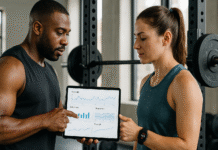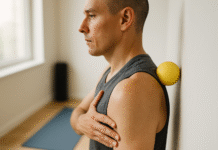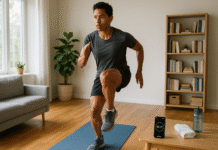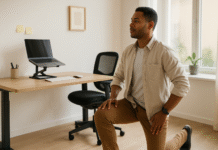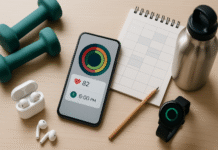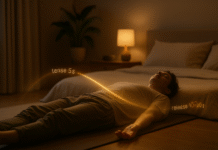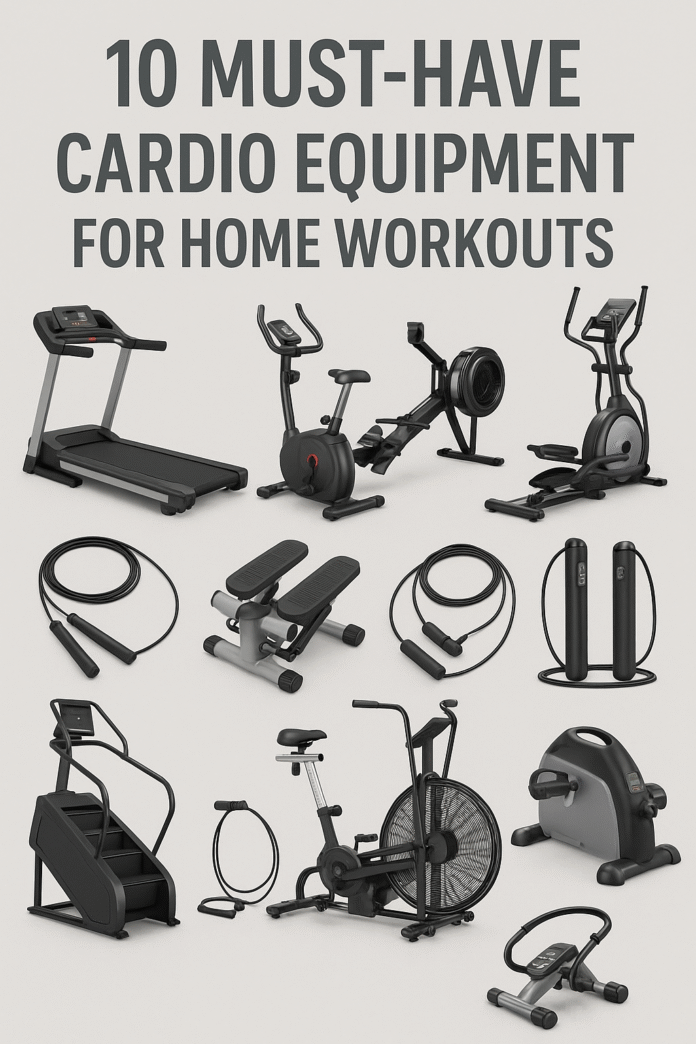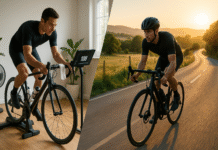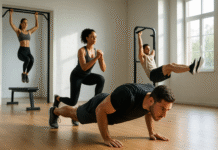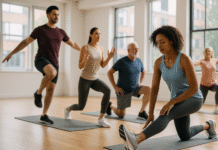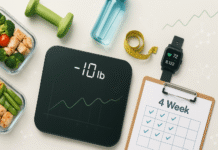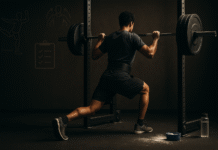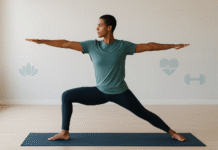You need more than just enthusiasm to work out at home; you also need the right equipment. You can reduce weight, make your heart healthier, or enhance your stamina by having good cardio machines and accessories in your home gym. This whole guide will help you make the best home training space by going over ten important pieces of cardio equipment, talking about their benefits, giving expert advice, and answering common questions.
People like working out at home because it’s simple, free, and you can do it whenever you want. In 2024, the International Health, Racquet & Sportsclub Association (IHRSA) did a poll and found that 65% of people who like to work out now perform cardio from home. It can be hard to stay motivated or make progress if you don’t have the right tools. We will:
- Write down the 10 best cardio machines and tools you can use at home.
- Talk about who should use them, what they do well, and how much they cost.
- Tell people how to set up and care for their tools so they last longer.
- Tell people about the science of cardio that works, and have experts back it up.
- Answering questions that a lot of people have can help both new and experienced athletes.
At the end, you’ll know exactly how to set up a cardio room in your home that suits your goals, budget, and the space you have.
1. A Quick Look at the Treadmill and Its Benefits
You can still do cardio at home, and the best way to do it is on a treadmill. To protect your joints, you can walk, jog, or run at varied speeds, on different slopes, and with different amounts of stress. Better VO₂ max, burning fat, and keeping bones strong are some of the ways that the heart and lungs can help.
- Motor Power: It should have at least 2.5 CHP for running and 1.5–2.0 CHP for walking.
- Inclination Range: The inclination must be 10% or more in order to modify the intensity.
- Cushioning System: Absorbs shock to protect knees.
- Foldability: Because it rolls up, it doesn’t take up as much space in small home gyms.
- Integrated Programs: Workouts that already have intervals in them.
Prices that are different
- Basic models: $600–$1,000
- Mid-Range: $1,000–$2,500 (better motors and a steeper incline)
- High-End: $2,500–$5,000 or more, with live classes and screens that enable you interact
Advice from a pro
Jane Reynolds is a NASM-certified personal trainer with 12 years of experience. She says that “a treadmill with incline and decline settings helps mimic outdoor terrain, activating different muscle groups and preventing boredom.”
2. Bikes that Stay Still While You Stand or Lie Down
Summary and Advantages
Stationary bikes are good for those with aching joints because they don’t hurt them too much and help them shed a lot of weight. Upright bikes put you in the same position as riding a bike outside, which works your core muscles. Recumbent bikes let you lie down and take the weight off your lower back, though. Both of these things will help you breathe better and make your legs stronger.
- Type of Resistance: Magnetic for quieter operation.
- Weight of the Flywheel: The heavier the flywheel, the easier it is to pedal.
- Adjustability: The handlebars and seat can be changed to fit people of different heights.
- Console Metrics: Watts, RPM, and keeping track of your heart rate.
Prices that are not the same
- Basic magnetic bike: $200–$500
- Mid-Range: $500–$1,200 (better build quality and more resistance levels)
- High-End: $1,200–$3,000 (smart bikes that enable you take classes)
An expert’s advice
“Recumbent bikes are great for seniors and rehabilitation because they give you a good cardio workout without putting too much stress on your knees or back,” says Dr. Alan Mitchell, who holds a PhD in exercise physiology.
3. A Look at the Rowing Machine and What It Can Do for You
Rowing is a terrific method to get a workout for your legs, core, and upper body without putting too much stress on your body. They can help you get stronger and fitter and burn up to 600 calories an hour.
- Resistance Type: Air for resistance, water for a smooth feeling, and magnets for quiet.
- Monitor Metrics: Keep track of how long you’ve been doing it, how far you’ve gone, and how many strokes you’ve done in a minute.
- Adjustability: Footrests and handlebars to make them more comfortable and get the most power out of them.
- Frame Material: Steel or aluminum for strength.
Different Prices
- Basic models: $300–$600
- Mid-Range: $600–$1,200 (better seals and build quality)
- High-End: $1,200–$2,500 (for advanced monitors and designs that fold)
Expert Advice
Lisa Cheng, a coach for Olympic rowers, says, “To get the most out of your cardiovascular adaptations, do interval rowing sessions with 30 seconds of sprinting and 60 seconds of rest.”
4. A Trainer Who Utilizes an Elliptical
Summary and Pros
Ellipticals are a terrific technique to raise your heart rate without putting stress on your joints. They do this by combining biking, skiing, and ascending stairs. They work out both the upper and lower body and put less stress on the joints by copying how people walk properly.
- Stride Length: Most people may use a length between 18 and 22 inches.
- Incline Settings: To make things harder and work on your butt.
- CrossRamp® Technology: Some models change the ramp’s angle to make your muscles work.
- Handlebar Motion: Two-action handles that keep your arms busy.
Prices
- Entry-Level: $500–$800
- Mid-Range: $800–$1,500
- High-End: $1,500–$3,500
Advice from a Professional
Maria Lopez, a physical therapist, says, “Don’t just use your legs; push and pull the handles with each step to really work your whole body.”
5. A Quick Look at Jump Rope and What It Can Do for You
A jump rope is a basic piece of equipment that you can take with you and use to receive a high-intensity cardiovascular workout that makes your bones stronger, your coordination better, and your agility better. In just 15 minutes, you can burn up to 200 calories.
- Rope Type: PVC speed ropes for fast turns and weighted ropes for resistance.
- Handles: Ball-bearing systems make it easy to turn.
- Adjustable Length: You can make it longer or shorter to fit different heights.
How Much It Costs
- Basic: $10–$20
- Mid-Range: $20–$40 (great materials and ball bearings)
- Smart/Weighted: $40–$80
Advice from a Pro
Tim Nguyen, a qualified boxing coach, says, “Start with two-minute intervals and take a minute break between sets. As your stamina improves, add more time slowly.”
6. A List of the Good Things About Step Mills and Stair Steppers
Step mills and steppers that look like climbing stairs make your lower body workouts harder by raising your heart rate and putting stress on your glutes, quadriceps, and calves. They don’t make as much noise or take up as much space as real steps.
- Step Dimensions: The height and width of the steps. Wider pedals help you stay balanced better.
- Resistance Levels: To make it harder.
- Digital Display: Indicates the time, steps per minute, and calories burned.
Costs
- Budget Steppers: $100–$250
- Mini Steppers: $50–$100
- Step Mills: $3,000–$8,000
Advice from Someone Who Knows
Dr. Rachel Singh, an orthopedic doctor, says, “To avoid knee strain, use the right step technique: land mid-foot and keep your posture tall.”
7. Summary and Benefits of the Fan Bike (Air Bike)
When there is a fan on an air bike, it is hard to pedal and push/pull the handles. The more you pedal and push/pull, the harder it gets. They are the best HIIT workouts since they work out your whole body.
- Handle & Pedal Motion: The handle moves and the arms and legs move at the same time.
- Digital Console: Time, calories, and watts.
- Adjustable Seat: Fits persons of different heights.
Price Range
- Entry-Level: $400–$700
- Mid-Range: $700–$1,200
- High-End: $1,200–$2,500
Advice from an Expert
“Do Tabata on an air bike,” explains CrossFit Level 2 Trainer Alex Torres. “20 seconds of hard work, 10 seconds of rest, and then do it again eight times.”
8. Mini Stepper with Bands for Resistance
Summary and Benefits
Mini steppers with resistance bands are compact, cheap, and great for getting your heart rate up and working out your upper body. They’re great for confined areas and while you’re on the go.
- Resistance Bands: Made of robust material so they won’t break.
- Hydraulic Cylinders: To make the step work without any problems.
- Non-Slip Base: Maintains items in place.
Price
- Mini Steppers: $30–$60
A Professional’s Advice
Emily Hart, a Pilates trainer, says, “To work your core, pull your belly button toward your spine and don’t lean too much on the handles.”
9. A List of the Benefits of Digital Trainers and Smart Skipping Ropes
Smart skipping ropes use Bluetooth apps to keep track of how many jumps you perform, how long you work out, and how many calories you burn. They provide you feedback right away, which makes it simpler to work out alone.
- App Compatibility: Works with apps on both Android and iOS devices.
- Rechargeable Battery: To keep track of everything all the time.
- Lightweight Design: Makes your arms feel better.
Prices
- Smart Ropes: $30–$70
A Pro’s Advice
Peter Zhao, a running coach, says, “Use on soft surfaces or workout mats to lessen the impact on your shins.”
10. A List of the Advantages of the Portable Exercise Pedal
A pedal exerciser is a great way for people who have trouble moving or who work at desks to get some low-intensity cardio. It can fit under desks or in front of chairs, and you can cycle with both your arms and legs.
- Tension Knob: Controls how hard it is to move.
- Non-Slip Feet: Strong feet to prevent sliding.
- Digital Screen: Shows time, calories burned, and revolutions.
Prices
- Portable Pedal Exercisers: $30–$100
Advice from a Pro
“Use during phone calls or TV time to get ‘active minutes’ throughout the day,” says Dr. Sana Qureshi, an expert on health at work.
How to Use Your Home Cardio Area
- Get some mats to put on the floor to protect it and soak up the shock.
- Make sure there is adequate light and air flow in the room to keep people safe and motivated.
- Use shelves, wall hooks, or storage racks to store your jump ropes, bands, and other little things in order.
- Set up a stand for your tablet or TV so you can view virtual lessons and stay interested.
- Safety: There should be 2 to 3 feet of space around each machine so that people may get on and off in an emergency.
Safety and Maintenance Tips
- Cleaning: After each use, wipe down the grips and consoles to keep sweat from ruining them.
- Lubrication: Follow the manufacturer’s directions when you need to oil the slide rail on the rower or the treadmill belt.
- Monthly Check: Check the cables, fasteners, and resistance mechanisms to see if they are getting worn out.
- Professional Maintenance: Schedule yearly tune-ups for your expensive machines.
- Warm-Up and Cool-Down: Always start with dynamic stretches and end with static stretches to lower the chance of injury.
Frequently Asked Questions
- What is the best cardio machine for tiny spaces?
Mini steppers, portable pedal exercisers, and jump ropes are all great because they are small, can be folded up, and are easy to keep. - How often should I do cardio at home each week?
The American College of Sports Medicine says you should do at least 150 minutes of moderate-intensity or 75 minutes of vigorous-intensity cardio every week, spaced out over three to five days. - Is it permissible for beginners to use machines that are very difficult, such as air bikes?
Yes, but you should start with shorter intervals and less resistance. You can make it harder as you get stronger. - Do you wish to get cardio devices that are smart?
Smart machines can help you stay motivated and on track by giving you community features, interactive workouts, and feedback in real time. - What do I need to think about when I decide between an upright bike and a recumbent bike?
Recumbent bikes are better for people with back or hip pain, while upright bikes are better for strengthening the core and simulating outdoor cycling. - What do you do to keep your heart apparatus in good shape?
To keep your machines (such treadmills and rowers) functioning securely and well, you should clean and oil them, check their moving parts, and get professional aid every once in a while.
To Put It Briefly
You can work out whenever and wherever you want if you have a home cardio gym. A high-end treadmill, a rowing machine that can do a number of things, or a jump rope that fits in your pocket can all help you get in shape. To get the most out of your things and make them last as long as possible, put quality, safety, and proper care first. These ten cardio tools and expert programs, such as steady-state workouts and interval training, will help you become healthier and fitter.
References
- International Health, Racquet & Sportsclub Association. “2024 Home Fitness Report.” IHRSA. https://www.ihrsa.org/publications/2024-home-fitness-report
- American Council on Exercise. “Benefits of Treadmill Training.” ACE Fitness. https://www.acefitness.org/education-and-resources/professional/expert-articles/benefits-of-treadmill-training/
- Harvard Health Publishing. “Stationary Cycling: A Good Option for Joint Pain.” Harvard Health. https://www.health.harvard.edu/staying-healthy/stationary-cycling-for-joint-pain
- Mayo Clinic. “Rowing Machine Workouts: Benefits and Tips.” Mayo Clinic. https://www.mayoclinic.org/rowing-machine-workouts
- Cleveland Clinic. “Elliptical Trainer Health Benefits.” Cleveland Clinic. https://health.clevelandclinic.org/elliptical-trainer-benefits/
- Johns Hopkins Medicine. “The Health Benefits of Jumping Rope.” Johns Hopkins Medicine. https://www.hopkinsmedicine.org/health/wellness-and-prevention/benefits-of-jumping-rope
- American College of Sports Medicine. “Guidelines for Exercise Testing and Prescription.” 11th Edition, 2022. https://www.acsm.org/read-research/books/acsms-guidelines-for-exercise-testing-and-prescription
